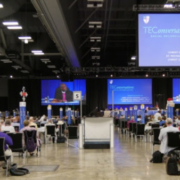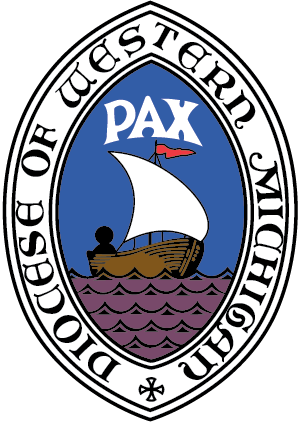Resolution Submitted by the Joint Deputation
As our diocesan deputations to General Convention prepared for our work, we discerned a desire to communicate to the wider church our shared experience of the recent Title IV process around our former bishop’s suspension. In exploring whether to submit a resolution or memorial, we entered conversation with those who served during this time as presidents of our Standing Committees as well as our provisional bishop, the Rt. Rev. Prince Singh.
Resolutions call on General Convention to take specific legislative action. In order to be accepted, a resolution must be approved in identical language by both the House of Bishops and the House of Deputies. A memorial is more like a letter written to General Convention and is used to draw attention to a “matter of great importance” to the Church. Unlike resolutions, memorials do not create binding actions. Both are used to speak to the Church in efforts to effect change. We submitted one of each. Click these links to find the texts of the Memorial from Deputies of Eastern and Western Michigan (M015) and Resolution (D095) with Explanation.
This memorial and resolution were endorsed almost unanimously by our deputations and have the full support and input of Bishop Singh.
As a part of the General Convention process, each resolution receives a hearing, an opportunity for the people (any Episcopalian) to speak to the proposed legislation. The hearing for Resolution D095 (and others assigned to the Title IV Committee) will be on Thursday, June 16, 7:30-9:30pm via Zoom. If you would like to speak to our resolution or observe the hearing, you can register to do that here. Click here to learn how to sign up to testify and what this means.
We offer this memorial and resolution to the larger Church for the sake of healing: both for our own healing as dioceses and hopefully beyond us too. This moment is not about the behaviors of any one person or office. Instead, we’re attempting to draw attention to systemic issues that collectively, as Church, we have the capacity to address. After experiencing a process more painful and costly than it needed to be, we believe our Church can do better. In this memorial and resolution we offer some of our truth along with our genuine hope that better is not only possible but is within our reach.
On behalf of the Deputations of Eastern and Western Michigan,
The Rev. Jen Adams – Grace, Grace, Holland
Bill Fleener, Jr. – Bi-Diocesan Chancellor; St. David’s, Lansing
The Rev. Nurya Love Parish – Plainsong Farm
Linda Rathburn – St. Christopher’s, Grand Blanc














